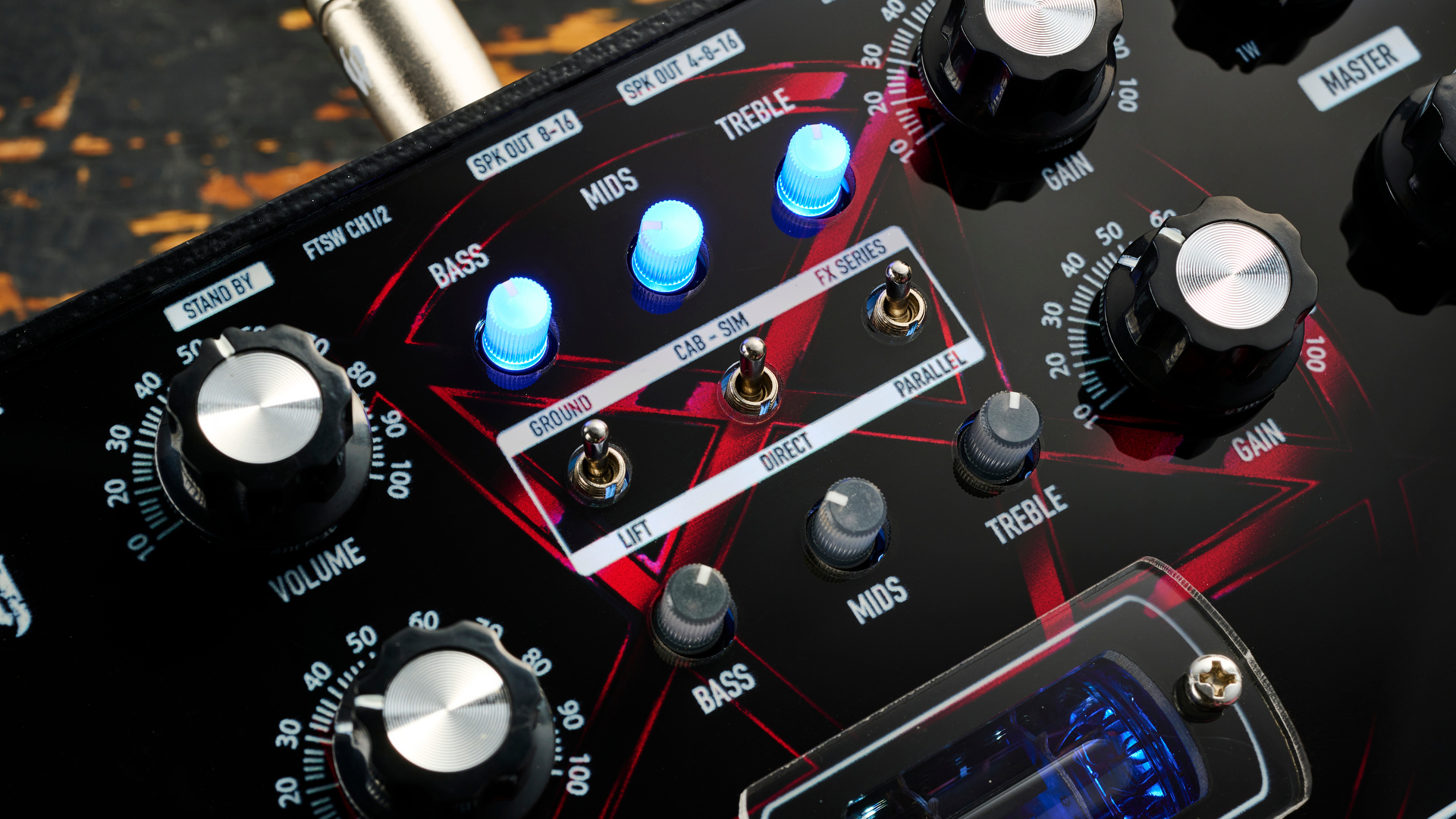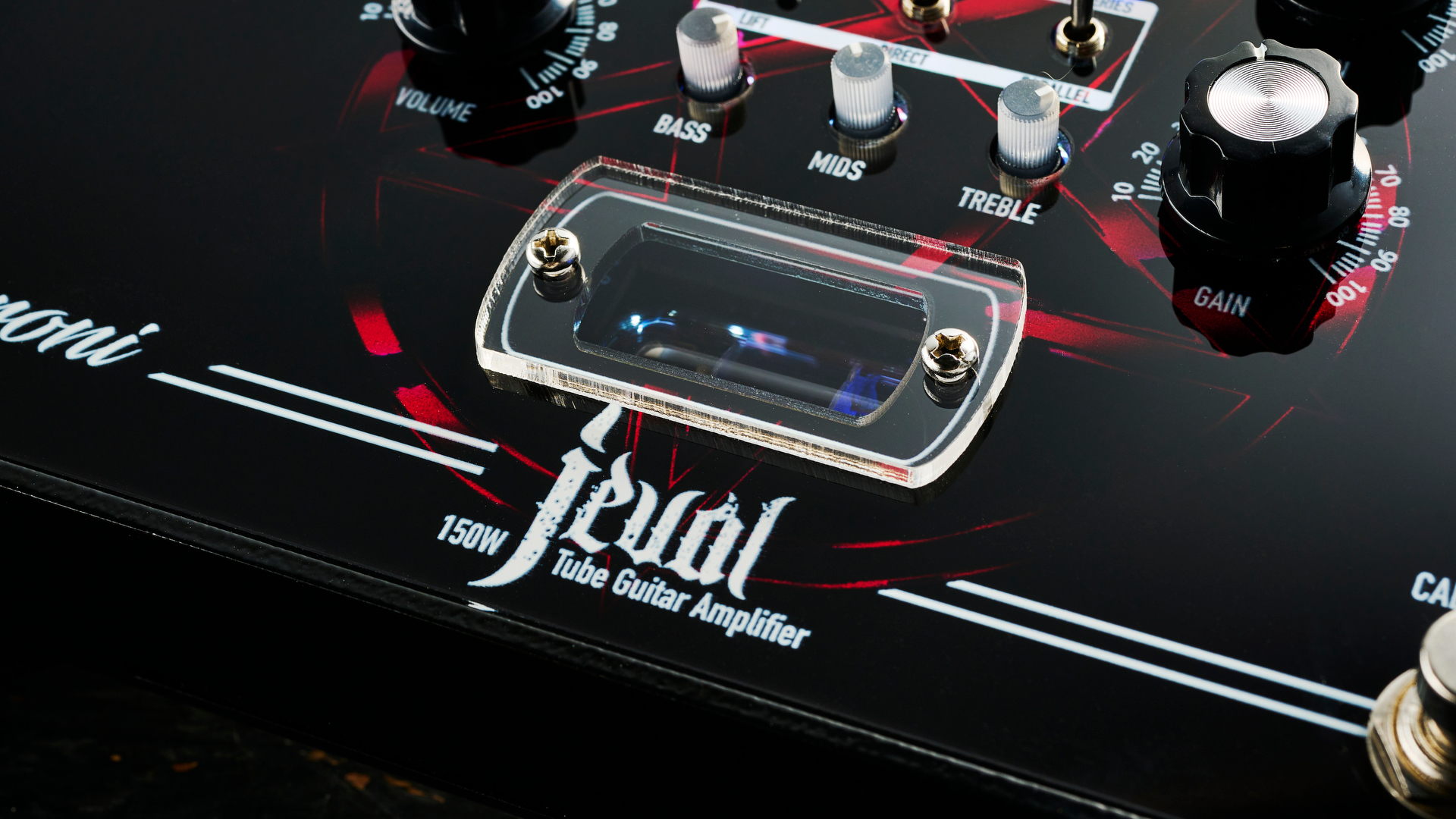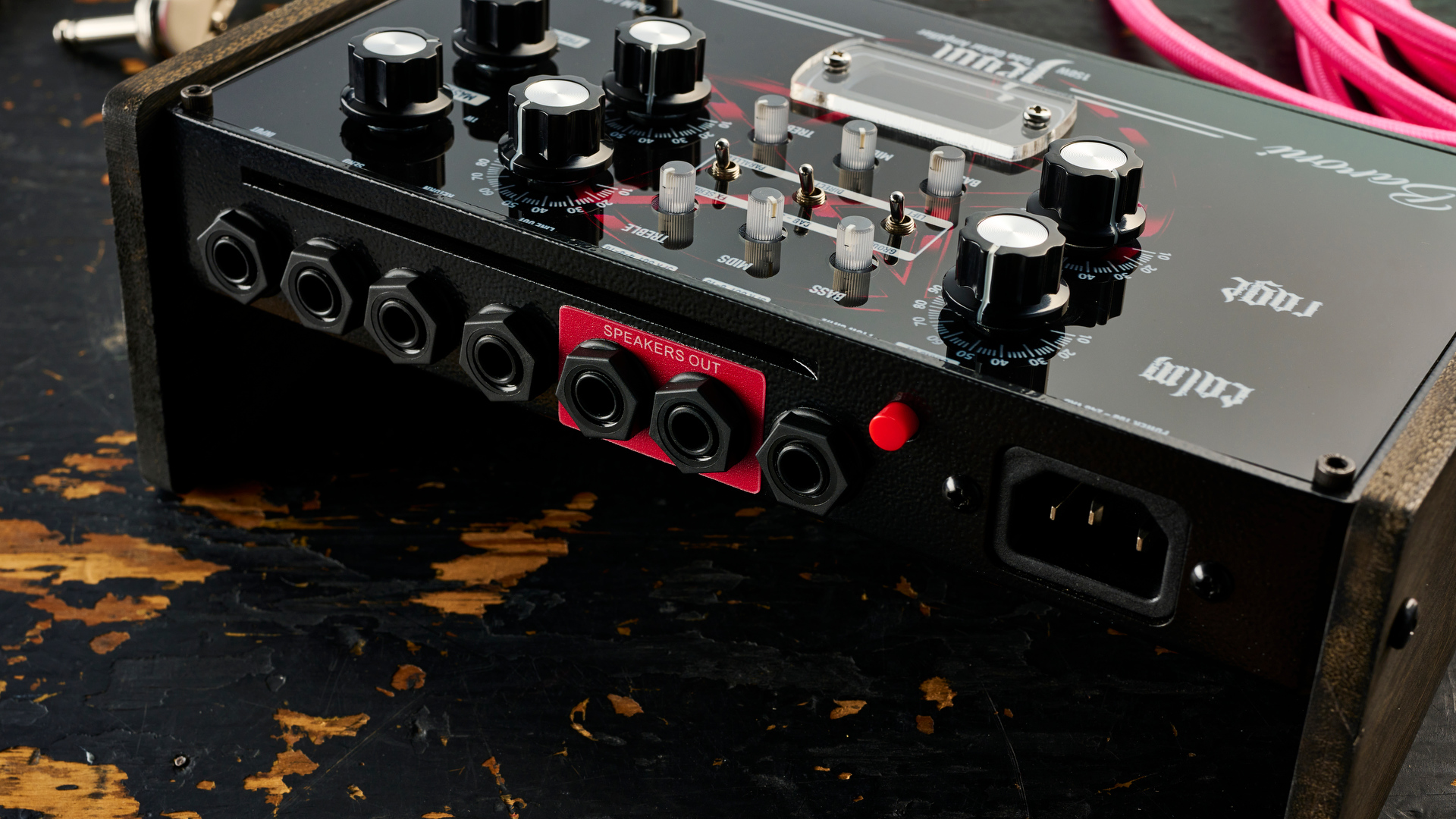MusicRadar Verdict
For a fly rig, session or function situation, these could be killer. However, the market is crowded for amp sims, even at this price bracket
Pros
- +
Good high-gain tones
- +
Integrated power amp
- +
Hybrid tube preamp
Cons
- -
Not very versatile
- -
Only one built-in cab sim
MusicRadar's got your back
Baroni Jeval review: What is it?
The Baroni Jeval is a tabletop and pedalboard high-gain amp. Its USP is that it’s fully integrated, with an analogue 4x12 cab sim and 100W solid-state power stage.
This means that it’s ideal for fly rigs and studio work. Additionally, there’s a desk mount in case it is destined to live on a desktop in a home studio. While it’s a sizable unit next to other pedals, it’s compact compared to the amps that it models.
The Jeval has tough competition though - on the modeling side, pedals like the Line 6 HX Stomp, and on the tube side, the Victory tube preamps. Much depends on how whether you value the integrated power amp, or simply need a pedalboard-sized preamp.

Baroni Jeval review: Performance and verdict
The Jeval is primarily a higher-gain amp but has two channels with different voicings. The first, named Calm, is modelled after a blackface Fender, while the second, Rage, sounds rectifier-esque. This gives the impression of a Mesa-in-a-box.
Throwing humbuckers or single coils at the Rage channel, the results are almost uniformly very saturated. Unlike something more 5150-like, pulling the gain down and smashing it with a boost pedal doesn’t result in a more articulate gain sound, rather it’s more or less the same level of saturation.
Since the power amp of the pedal isn’t tube-based, that’s a possible culprit. Articulate power tube saturation caused by slamming the amp is usually only possible with tube power stages. If you’re after saturated rectifier-style distortion, then you’re unlikely to have any complaints.

However, like all heavily saturated distortion tones, the EQ needs to be dialled in carefully to avoid sounding thin, scratchy or fizzy. The best tones came from running humbuckers, with a boost in front and a post-gain stage using a mic pre. Particularly with a bridge single-coil, adding the extra pre and post-gain stages is key to getting the most out of the unit.
The calm channel is simpler. It’s thick enough that extra gain stages aren’t essential, they merely serve to thicken it up. It takes gain pedals well and even handles more extreme fuzzes. The best sounds came, unsurprisingly, from running a spring reverb or tape echo after it, as well as a software cab sim. There’s a built-in cab sim, but it can’t compete with a full-featured software solution or decent IR. The master and presence controls affect both channels. The presence is centred around 3.5kHz, meaning it’s easy to add some sparkle back in after tweaking the 3-band EQ to taste.
In its pedalboard format, the pedal is a bit dated-looking. The shine recalls the era of the original Line 6 POD, while the graphics feel very nu-metal. Even so, included in the package are desk mounts that can be attached if you’re using it on the tabletop. Not only are these a big ergonomic improvement for studio use, but they also make it look a lot cooler. If that sounds a bit woolly, then always remember that the vibe you get off a piece of gear can affect the way you play almost as much as how it sounds.
In any case, as a pedalboard amp solution, while it’s cheaper and smaller than a real tube amp, it’s still far from small, even if it is about the same size as its competitors. Here it does have an edge - many of its tube-based competitors are pure preamps and lack a power stage. However, on the preamp side, it sports a single ECC82 tube and FET topology, where others are all-tube. Clearly, there’s a trade-off here between being a fully integrated solution and having the space to be purist about an all-valve stage.

Final verdict
The Jeval is a decent integrated pedal solution as a fly rig or pedalboard gigging solution. However, it’s at a very difficult price point where it competes with some real heavy hitters. Its main selling point is convenience.
Here it has an edge. Still, not every player will be looking for a high-gain pedalboard amp. It’s likely session and function players are the target market for this and they will be looking for something more versatile.
There are other valve, hybrid, and software units available at a similar price with a more versatile feature set, in exchange for not being integrated with a power amp.
Baroni Jeval review: Hands-on demos
Mad Steex
Euge Valovirta
Sonic Drive Studio
Baroni Jeval review: Specifications
- Sockets: Power, Channel switch, Speaker outs, Line out, Send, Return, Input
- Power supply: IEC (included)
- Speaker out: 4/8/16 Ohm
- Power out: 150W RMS
- Contact: Sound Service
Alex Lynham is a gear obsessive who's been collecting and building modern and vintage equipment since he got his first Saturday job. Besides reviewing countless pedals for Total Guitar, he's written guides on how to build your first pedal, how to build a tube amp from a kit, and briefly went viral when he released a glitch delay pedal, the Atom Smasher.
“Excels at unique modulated timbres, atonal drones and microtonal sequences that reinvent themselves each time you dare to touch the synth”: Soma Laboratories Lyra-4 review
“I used everything I knew about music”: How Green Day exceeded expectations with their most ambitious song
YouTube just added AI tools that makes musicians, library music and video editors redundant














